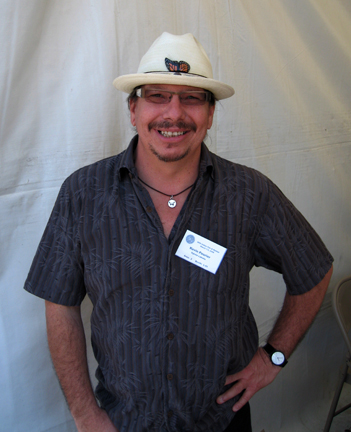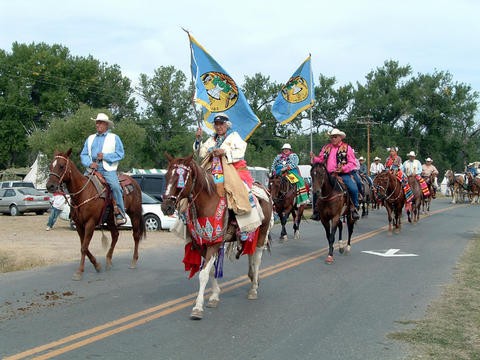|
Red Fish (Oglala)
Red Fish was a chief of the Oglala Lakota tribe in the 1840s. He had met with the Jesuit missionary Pierre-Jean De Smet, Father Peter John De Smet at Fort Pierre, South Dakota, Fort Pierre in South Dakota in 1848. He asked for De Smet's help in gaining the return of his daughter who had been kidnapped by the Crow Nation, Crow after he had made a disastrous unprovoked raid upon them.Robert C. Carricker: ''Father Peter John De Smet: Jesuit in the West'' (Oklahoma Western Biographies), p. 173; University of Oklahoma Press (1998) Red Fish was a participant in the Fort Laramie Treaty of 1851, where he represented the Miniconjou with his son Lone Horn (c. 1814-1875). He negotiated with Chief Big Robber of the Crow to establish regional boundaries. References Lakota leaders Native American leaders 19th-century Native Americans People from South Dakota {{NorthAm-native-stub ... [...More Info...] [...Related Items...] OR: [Wikipedia] [Google] [Baidu] |
Oglala Lakota
The Oglala (pronounced , meaning "to scatter one's own" in Lakota language) are one of the seven subtribes of the Lakota people who, along with the Dakota people, Dakota, make up the Sioux, Očhéthi Šakówiŋ (Seven Council Fires). A majority of the Oglala live on the Pine Ridge Indian Reservation in South Dakota, the eighth-largest Indian reservation, Native American reservation in the United States. The Oglala are a List of federally recognized tribes, federally recognized tribe whose official title is the Oglala Sioux Tribe (previously called the Oglala Sioux Tribe of the Pine Ridge Reservation, South Dakota). However, many Oglala reject the term "Sioux" due to the hypothesis (among Sioux#Names, other possible theories) that its origin may be a derogatory word meaning "snake" in Ojibwe language, the language of the Ojibwe, who were among the historical enemies of the Lakota. They are also known as Oglála Lakhóta Oyáte. History Oglala elders relate stories about the orig ... [...More Info...] [...Related Items...] OR: [Wikipedia] [Google] [Baidu] |
Pierre-Jean De Smet
Pierre-Jean De Smet, SJ ( ; 30 January 1801 – 23 May 1873), also known as Pieter-Jan De Smet, was a Flemish Catholic priest and member of the Society of Jesus (Jesuits). He is known primarily for his widespread missionary work in the mid-19th century among the Native American peoples, in the midwestern and northwestern United States and western Canada. His extensive travels as a missionary were said to total . He was affectionately known as "Friend of Sitting Bull", as he persuaded the Sioux war chief to participate in negotiations with the American government for the 1868 Treaty of Fort Laramie. The Native Americans gave him the affectionate nickname ''De Grote Zwartrok'' (''The Great Black Skirt''). Early life De Smet was born in Dendermonde, in what is now Belgium in 1801, and entered the Petit Séminaire at Mechelen at the age of nineteen. De Smet first came to the United States with eleven other Belgian Jesuits in 1821, intending to become a missionary to Native Am ... [...More Info...] [...Related Items...] OR: [Wikipedia] [Google] [Baidu] |
Fort Pierre, South Dakota
Fort Pierre is a city in Stanley County, South Dakota, United States. It is part of the Pierre, South Dakota micropolitan area and the county seat of Stanley County. The population was 2,115 at the 2020 census. The settlement of Fort Pierre developed around an 1832 trading post and fort situated on the west bank of the Missouri River, near the confluence with its tributary Bad River. An earlier American-owned trading post had been operating nearby since 1817, and in 2017 the city celebrated its bicentennial of continuous permanent settlement. History On March 30, 1743, Francois and Louis-Joseph Gaultier de La Vérendrye reached the area of present-day Fort Pierre during an expedition west from Quebec, a French colony in present-day Canada. They left a lead plate buried in a hill to claim the land for the King of France. In the 1803 Louisiana Purchase, the United States acquired this area and the remainder of France's vast territory west of the Mississippi River. President Th ... [...More Info...] [...Related Items...] OR: [Wikipedia] [Google] [Baidu] |
Crow Nation
The Crow, whose Exonym and endonym, autonym is Apsáalooke (), also spelled Absaroka, are Native Americans in the United States, Native Americans living primarily in southern Montana. Today, the Crow people have a federally recognized tribe, the Crow Tribe of Montana, with an Indian reservation located in the south-central part of the state. Crow Indians are a Plains tribe, who speak the Crow language, part of the Missouri River Valley branch of Siouan languages. Of the 14,000 enrolled tribal members, an estimated 3,000 spoke the Crow language in 2007. During the expansion into the West, the Crow Nation was allied with the United States against its neighbors and rivals, the Sioux and Cheyenne. In historical times, the Crow lived in the Yellowstone River valley, which extends from present-day Wyoming, through Montana and into North Dakota, where it joins the Missouri River. Since the 19th century, Crow people have been concentrated on their reservation established south of Bill ... [...More Info...] [...Related Items...] OR: [Wikipedia] [Google] [Baidu] |
Fort Laramie Treaty Of 1851
The Fort Laramie Treaty of 1851 was signed on September 17, 1851 between United States treaty commissioners and representatives of the Cheyenne, Sioux, Arapaho, Crow, Assiniboine, Mandan, Hidatsa, and Arikara Nations. Also known as Horse Creek Treaty, the treaty set forth traditional territorial claims of the tribes. The United States acknowledged that all the land covered by the treaty was Indian territory and did not claim any part of it. The boundaries agreed to in the Fort Laramie Treaty of 1851 would be used to settle a number of claims cases in the 20th century. The Native Americans guaranteed safe passage for settlers on the Oregon Trail and allowed roads and forts to be built in their territories, in exchange for promises of an annuity in the amount of fifty thousand dollars for fifty years. The treaty also sought to "make an effective and lasting peace" among the eight tribes, who were often at odds with each other.Kappler, Charles J.: ''Indian Affairs. Laws and Trea ... [...More Info...] [...Related Items...] OR: [Wikipedia] [Google] [Baidu] |
Miniconjou
The Miniconjou (Lakota: Mnikowoju, Hokwoju – ‘Plants by the Water’) are a Native American people constituting a subdivision of the Lakota people, who formerly inhabited an area in western present-day South Dakota from the Black Hills in to the Platte River. The contemporary population lives mostly in west-central South Dakota. Perhaps the most famous Miniconjou chief was Touch the Clouds. Historic Miniconjou thiyóšpaye or bands Together with the Sans Arc (''Itázipčho'', ''Itazipcola'', ''Hazipco'' - ‘Those who hunt without bows’) and Two Kettles (''Oóhe Núŋpa'', ''Oóhenuŋpa'', ''Oohenonpa'' - ‘Two Boiling’ or ‘Two Kettles’) they were often referred to as ''Central Lakota'' and divided into several ''bands'' or ''thiyóšpaye'': * Unkche yuta (‘Dung Eaters’) * Glaglaheca (‘Untidy’, ‘Slovenly’, ‘Shiftless’) * Shunka Yute Shni (‘Eat No Dogs’, split off from the ''Wanhin Wega'') * Nige Tanka (‘Big Belly’) * Wakpokinyan (‘Fl ... [...More Info...] [...Related Items...] OR: [Wikipedia] [Google] [Baidu] |
Big Robber
Chief Big Robber (died 1858 or 1866), also known as Big Shadow or Big Robert, was a 19th century Crow chief. He was a participant in the Fort Laramie Treaty of 1851. His name ''Big Shadow'' referred to his large stature. Biography Big Robber had a brother named Dancing White Horse, who was killed by the Lakota in 1844. As a result, Big Robber performed a seven-day long Sun Dance. In 1851, as leader of the Mountain Crow band, he participated in the Laramie Treaty. United States Commissioners appointed Big Robber as head chief of the entire nation. He negotiated with Chief Red Fish of the Lakota to establish regional boundaries. After the treaty, Big Robber lost much respect and was disliked by other Crow bands. In 1858, the Lakota began to advance into Crow territory. Big Robber was killed that year after a battle that left 30 Crow dead. An alternate legend surrounding the death of Big Robber concerns the naming of Crowheart Butte in Wyoming. The butte was allegedly named after a ... [...More Info...] [...Related Items...] OR: [Wikipedia] [Google] [Baidu] |
Lakota Leaders
Lakota may refer to: * Lakota people, a confederation of seven related Native American tribes *Lakota language, the language of the Lakota peoples Place names In the United States: *Lakota, Iowa *Lakota, North Dakota, seat of Nelson County *Lakota Local School District (other), two districts in Ohio In other countries: *Lakota, Ivory Coast, a town in Ivory Coast *Lakota Department, a department in Ivory Coast Other uses *Lakota (club), a Bristol nightclub *Lakota (surname) *Lavolta Lakota, a post-punk band *UH-72 Lakota, an American military helicopter See also * *Lakota Local School District (other) *Republic of Lakotah The Republic of Lakotah or Lakotah is a proposed independent republic in North America for the Lakota people. Proposed in 2007 by activist Russell Means, the suggested territory would be enclaved by the borders of the United States, coverin ..., a proposed independent republic within the northern Great Plains of the US {{disambig, geo ... [...More Info...] [...Related Items...] OR: [Wikipedia] [Google] [Baidu] |
Native American Leaders
Native may refer to: People * Jus soli, citizenship by right of birth * Indigenous peoples, peoples with a set of specific rights based on their historical ties to a particular territory ** Native Americans (other) In arts and entertainment * Native (band), a French R&B band * Native (comics), a character in the X-Men comics universe * ''Native'' (album), a 2013 album by OneRepublic * ''Native'' (2016 film), a British science fiction film * ''The Native'', a Nigerian music magazine In science * Native (computing), software or data formats supported by a certain system * Native language, the language(s) a person has learned from birth * Native metal, any metal that is found in its metallic form, either pure or as an alloy, in nature * Native species, a species whose presence in a region is the result of only natural processes Other uses * Northeast Arizona Technological Institute of Vocational Education (NATIVE), a technology school district in the Arizona portion of ... [...More Info...] [...Related Items...] OR: [Wikipedia] [Google] [Baidu] |
19th-century Native Americans
The 19th (nineteenth) century began on 1 January 1801 ( MDCCCI), and ended on 31 December 1900 ( MCM). The 19th century was the ninth century of the 2nd millennium. The 19th century was characterized by vast social upheaval. Slavery was abolished in much of Europe and the Americas. The First Industrial Revolution, though it began in the late 18th century, expanding beyond its British homeland for the first time during this century, particularly remaking the economies and societies of the Low Countries, the Rhineland, Northern Italy, and the Northeastern United States. A few decades later, the Second Industrial Revolution led to ever more massive urbanization and much higher levels of productivity, profit, and prosperity, a pattern that continued into the 20th century. The Islamic gunpowder empires fell into decline and European imperialism brought much of South Asia, Southeast Asia, and almost all of Africa under colonial rule. It was also marked by the collapse of the large S ... [...More Info...] [...Related Items...] OR: [Wikipedia] [Google] [Baidu] |


.jpg)


